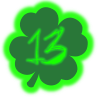How do you/can you update UVs in Daz Studio?
 Lucky13guy
Posts: 68
Lucky13guy
Posts: 68
I'm sorry if this topic has been covered, but I don't even know exactly what I would search for in the forum, so I hope y'all can forgive me if this is a redundant topic. Long story short, I downloaded a free fishing rod model that I want to try and rig it. It doesn't have the proper geometry to assign face groups for the bones I want to add, so I thought I could just extract the UV in blender, then manually add the geometry in GIMP, then reload the UVs in Daz. Now I'm starting to think it's not that simple, since I can't seem to figure out how to load the new UV on my rod.
Anyway, would someone be able to shine some light on this situation? Is it possible to add geometry to an object/figure? If so, how would one go about doing so? I've only been working in Daz for about 6 months, so I'm fairly new to this, and have only spent a couple of hours total in Blender in the same amount of time, so I basically have no experience there. Any assistance would be much appreciated.
Thanks!


Comments
If I understand you correctly then you should be looking for the Surfaces pane (and maybe the viewport tool?). That's how you add textures / UV maps to your meshes, or parts thereof.
Do keep in mind that Daz Studio is a modeller / "poser" environment first and foremost, it doesn't necessarily edit meshes. For that you'd use software like Blender or ZBrush. Figured I'd mention as much because your "geometries" comment confuses me. Keep in mind that different 3D software can use different naming conventions for the same things, there isn't really a full set out standard here.At best generally accepted names.
Yeah, I'm still learning all the terms. I've done some basic rigging, and from what I gathered, you need to be able to separate the surfaces out for each bone, but since the surfaces on the rod I'm trying to rig run the entire length of the cylinder needing to be rigged, I'm a little lost. It just occured to me, though, that I might be able to recreate said cylinder in Blender and try to build it with the correct poly's needed. Sorry again if this doesn't make a whole lot of sense. Like I said, I'm pretty new to this.
UV and geometry are two different things.
UV describes how existing 3D geometry of the mesh is mapped in 2D space (U,V coordinates), for the purpose of assigning/mapping a 2D texture onto the geometry.
You cannot edit a UV in Gimp (because a UV is not an image). Editing an image will not alter geometry of your mesh, which was your desired result.
You would have to edit geometry in something like Blender, and then remake your UV map for your new mesh (i.e., with UV Unwrap or UV smart project or something).
Doing the basic stuff in Blender is very easy to learn. It would probably benefit you to watch some beginner tutorials on Blender.
As an aside, new UVs can be loaded into Daz Studio. You click 'Load UV set' and then upload your full obj file (which should have same topology as your current mesh otherwise wont work). You can save UV as asset for your saved prop. You can choose which UV set to use in the Surfaces tab.
Surfaces can span multiple bones. Having groups (parts) that (roughly) match bones divisions can help with rigging (the bones will fill their matching group along their twist access) and with weight editing but they are not mandatory.
Group and UV chnages to the defaults can be loaded with Edit>Figure (or Object)>Geometry>Update base Geometry...
Ok. I think I'm starting to understand now. Thanks everyone. I still have much to learn. Lol
If you're bringing additional mesh the object will need to be imported and then you apply uv's in the surface tab as others have mentioned.
Another thing that might help is that if you have polygon groups these come in with an object import and can be converted to surfaces quite easily. I recently did this with an object that I imported in DS that was created in Zbrush.
If you need to know this feel free to contact me and I'll walk you thru it. I don't won't to overwhelm you with too much info if you're not worrying about setting up surfaces and just using the default.